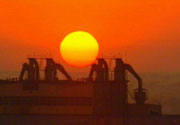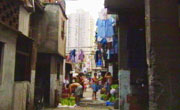Source:
01-13-2006 17:50

In today's episode, we will enter one of the biggest state owned enterprises, Anshan Iron & Steel Corporation. To some extent, it was more of a small community than a corporation. Under the traditional work unit system in China, enterprises provided its workers with a complete welfare system, including free residential housing. But in practice the ideal of providing housing for all workers often met with problems. Available housing just couldn't satisfy the demand. This posed difficult issues for a corporation with 500 thousand workers.
Work units are one of the main ways China organises its urban labour force. The work unit system is characterized by a low salary balanced by comprehensive welfare. It made allowed for rapid industrial development at low cost. During modern China's economic construction this was an important consideration. However, with the growing population of urbanized workers, work units could no longer afford the costs of the welfare system. Workers attached to work units gradually lost their privileged position.

Growing investment in residential properties had become a heavy burden for the Anshan Iron & Steel Corporation, which in return limited further capital investment. Meanwhile, from the early 1990's, China began to adjust its industrial structure. The Anshan Corporation was going through its most difficult period, as were other companies involved in heavy industry. The corporation could not afford to assign free accommodation to workers any longer. A reform in the residential housing system was about to take place.
Under the central planning system in China, industrial production and living spaces of common people were both put under government control. State power influenced directly every family by allocating fundamental living resources. With the transformation from a central planning system to a market economy, the functions of work units were changed, too. People were able to take increasing control over their own lives. In the next edition, we will see how these changes effected the actors of the Beijing People's Art Theatre.
Editor:Wang Ping
